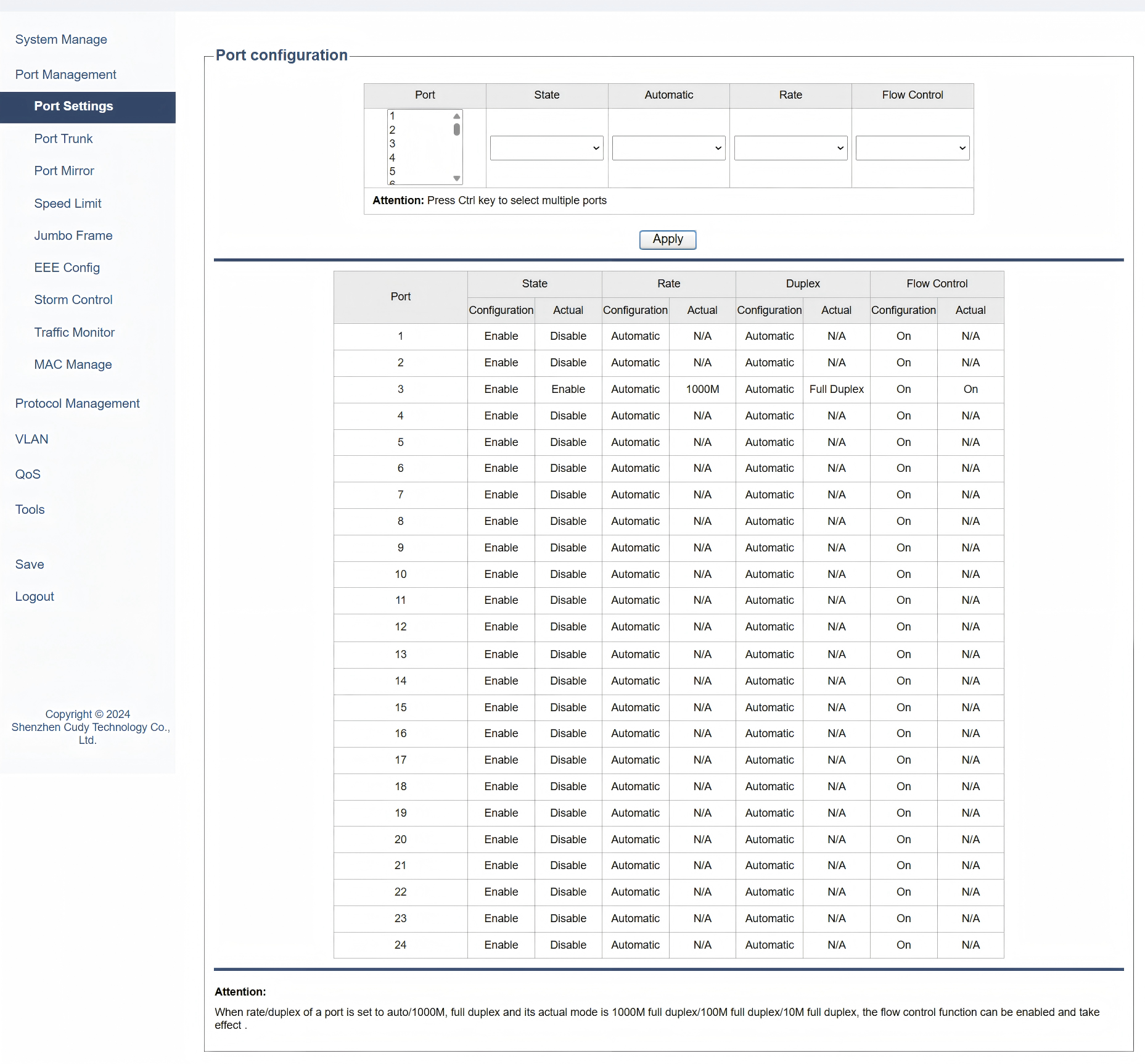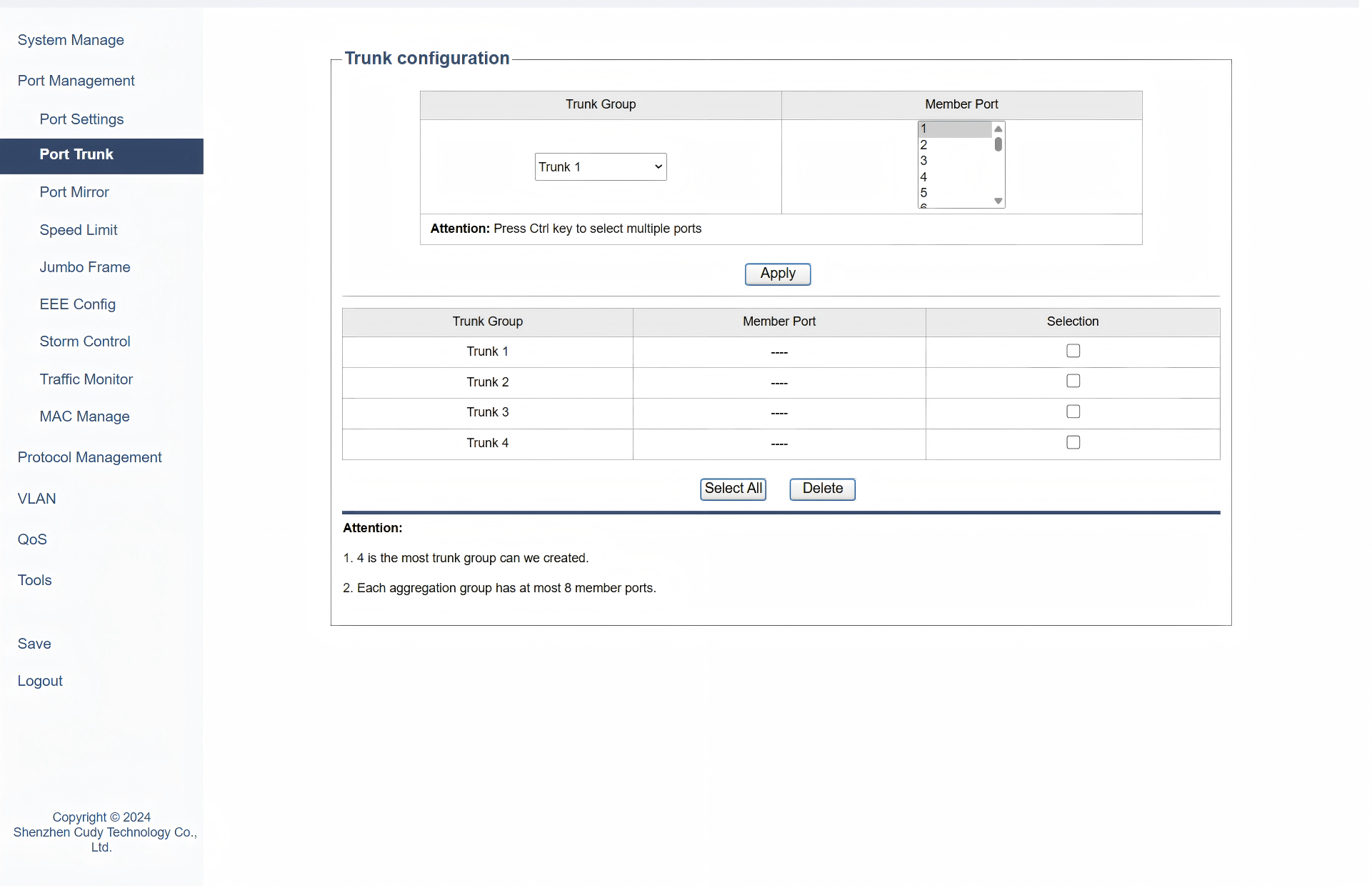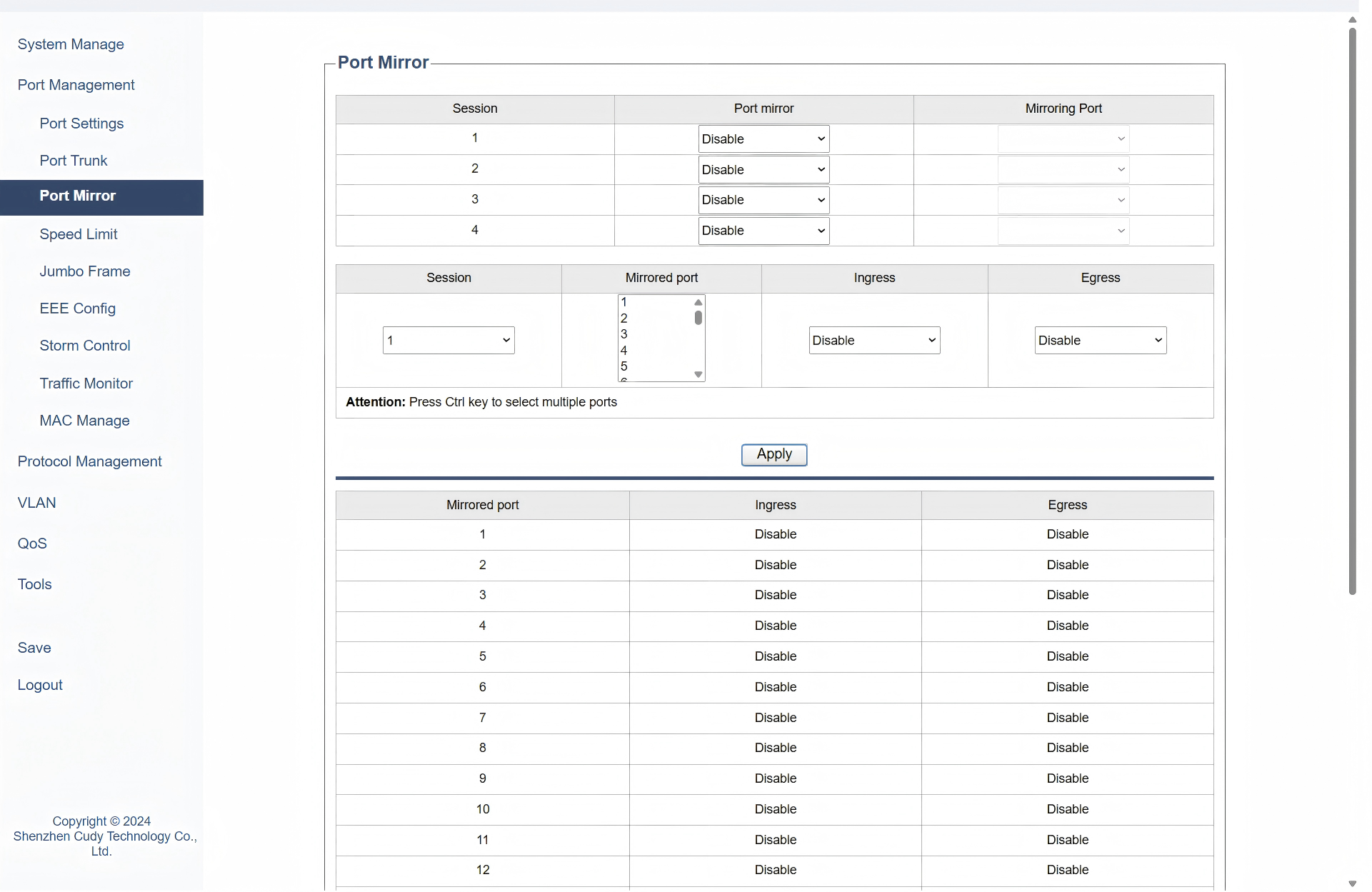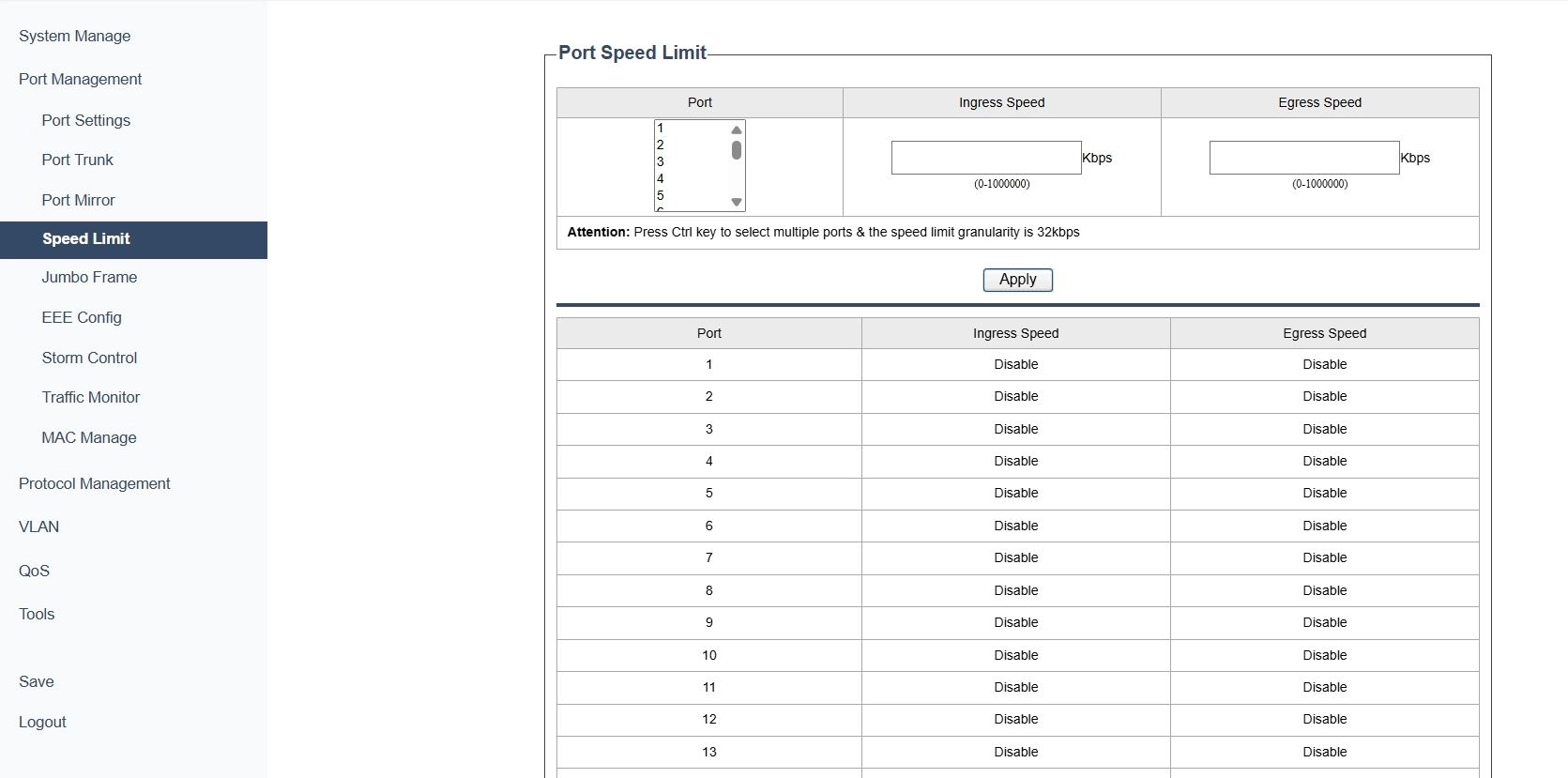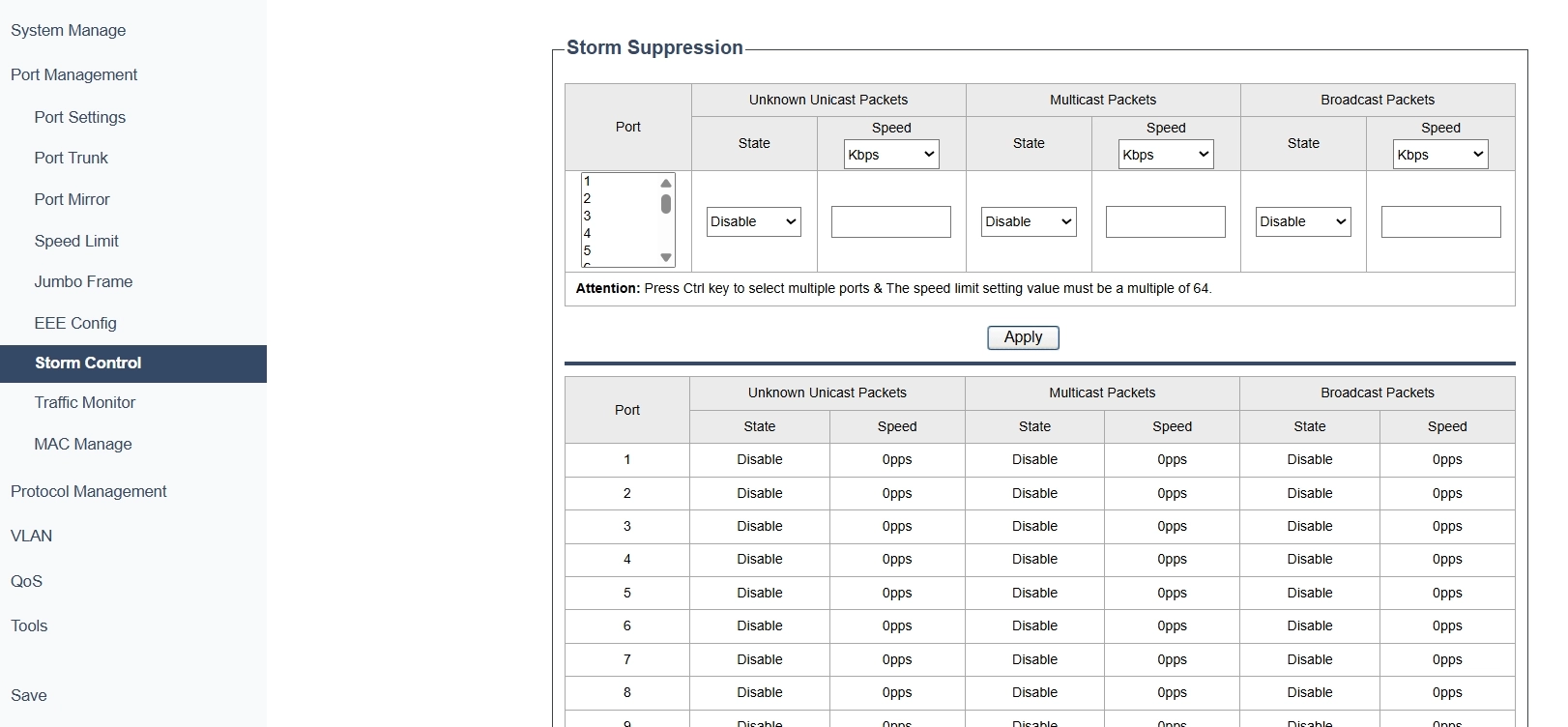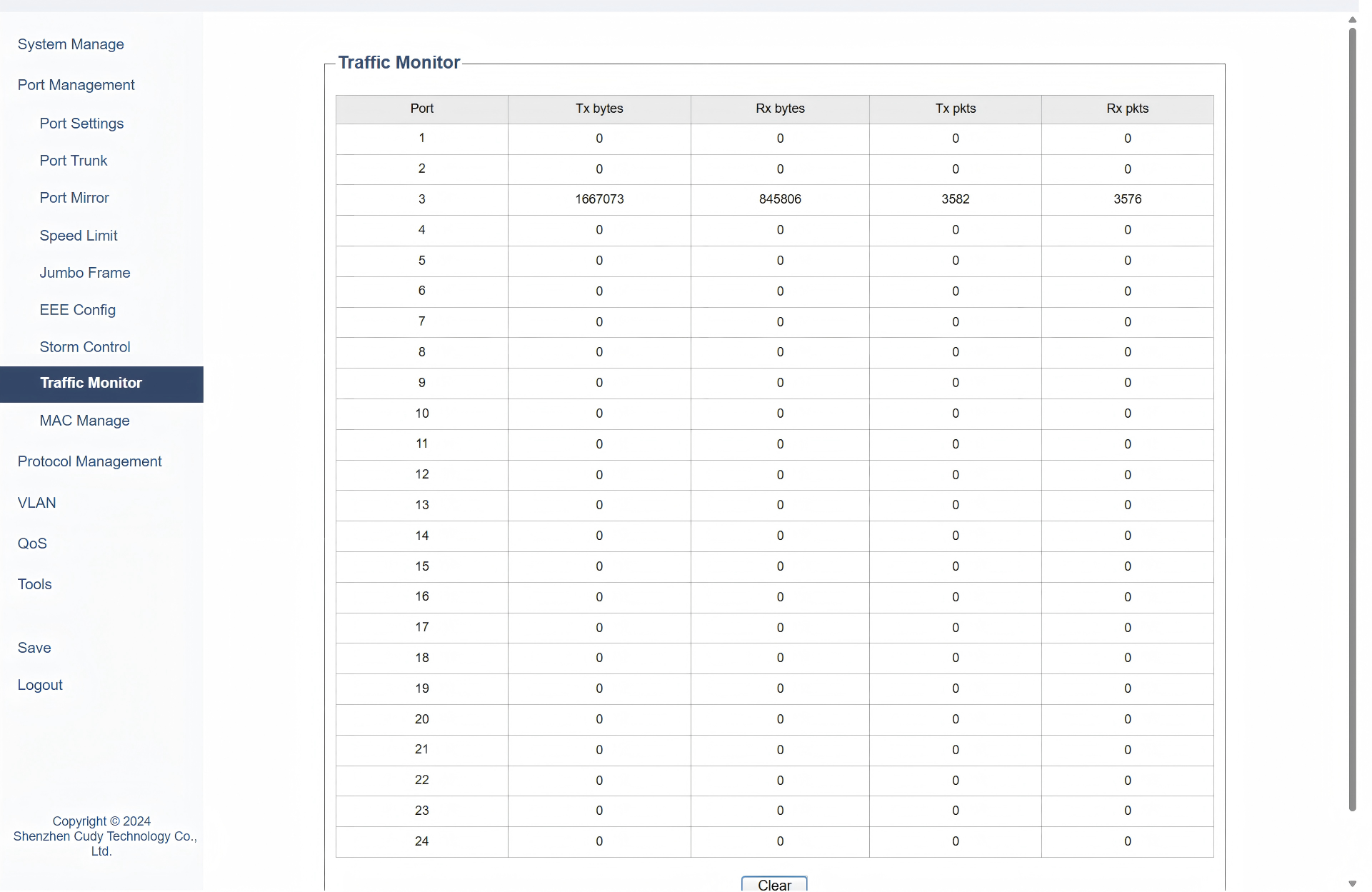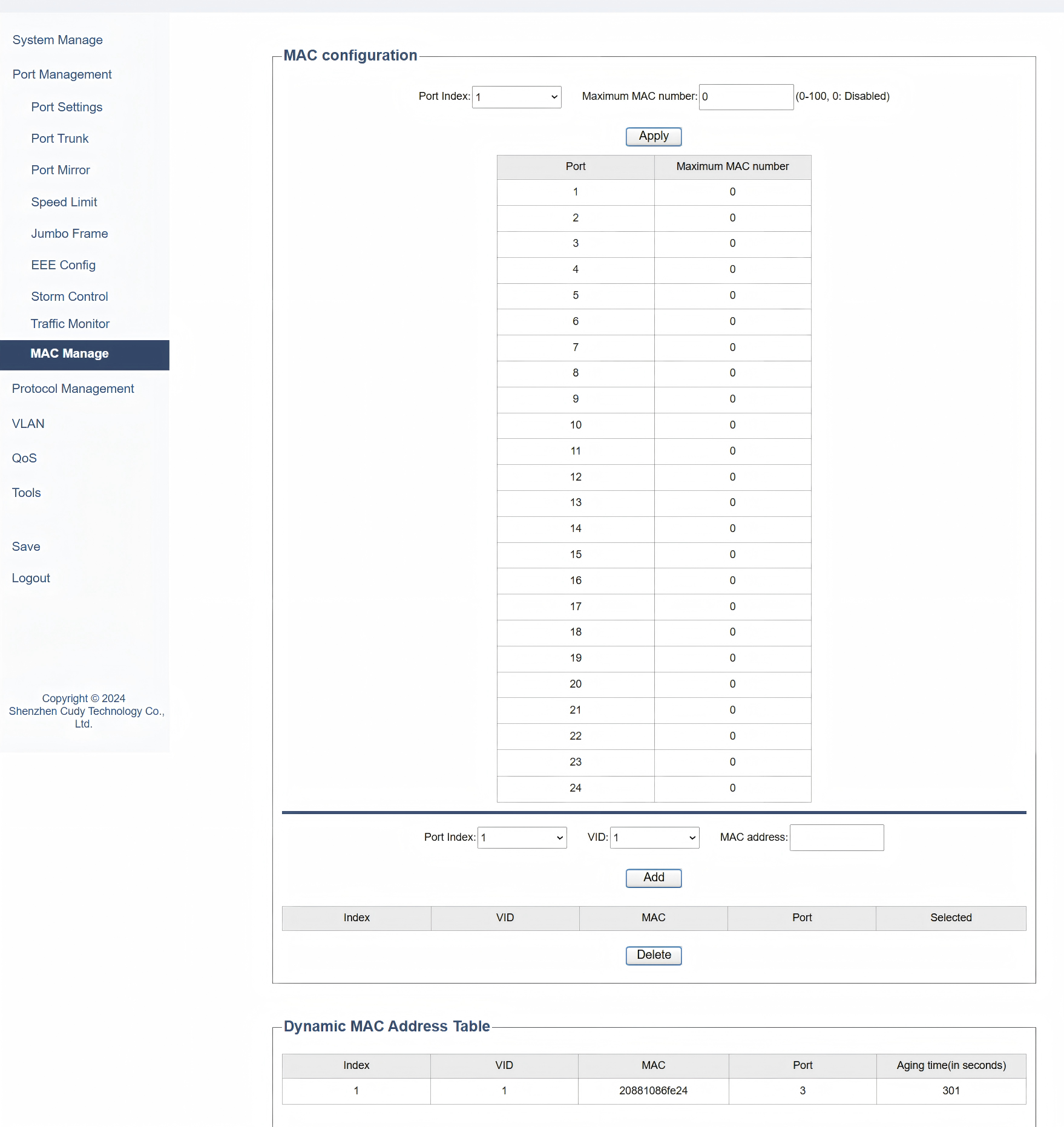Port Management
Note
Images of GS1024E are for reference only; details may vary by model.
Port Settings
- Port: Specifies the physical port on the switch.
- State: Select the port state to be Enabled or Disabled.
- Automatic: Turn On or Off the auto-negotiation for the port.
- Rate: Select the data transfer rate and mode (half or full duplex) for the port.
- Flow Control: Turn On or Off the flow control to manage data transmission.
- Apply: Click to save and apply your changes or settings.
- The table displays the current state for each port and will change with the new settings.
Port Trunk
- Trunk Group: Select a group of ports that can be managed as a single logical link. 4 trunk groups are available.
- Member Port: Specify the port(s) that is one or several member(s) of the selected trunk group. You may press Ctrl key to select multiple ports at once.
- Apply: Click to save and apply your changes or settings.
- Select All: Click to select all the entries.
- Delete: Click to delete the selected entries.
Port Mirror
- Session: Identify a specific mirroring session.
- Port Mirror: Select to Disable or Enable the Port Mirror.
- Mirroring Port: Specify the port that will receive mirrored traffic.
- Mirrored Port: Specify the port whose traffic will be mirrored.
- Ingress: Select to Disable or Enable the mirrored incoming traffic.
- Egress: Select to Disable or Enable the mirrored outgoing traffic.
Speed Limit
- Port: Specify the port to apply speed limits to.
- Ingress Speed: Set the maximum incoming data rate for the port.
- Egress Speed: Set the maximum outgoing data rate for the port.
- Apply: Click to save and apply your changes or settings.
Jumbo Frame
- Jumbo Frame Enable: Select to Enable or Disable jumbo frame support.
- MTU Size: Set the maximum transmission unit size for jumbo frames. Bigger MTUs enhance throughput but need compatible devices and careful management to avoid issues.
- Apply: Click to save and apply your changes or settings.
EEE Config
How to enable the Energy-Efficient Ethernet (EEE) state to manage power consumption?
- Check to select the port(s) to be configured.
- Select to Enable or Disable the EEE State.
- Click Apply to save and apply your changes or settings.
Storm Control
Storm Suppression manages traffic storms by limiting the rate of unknown unicast, multicast, and broadcast packets.
- Port: Specify the port to apply storm control to.
- State: Enable or Disable storm control.
- Unknown Unicast Packets: Enable or Disable the the traffic storm control of unknown unicast packets.
- Multicast Packets: Enable or Disable the the traffic storm control of multicast packets.
- Broadcast Packets: Enable or Disable the the traffic storm control of broadcast packets.
- Speed: Set the speed at which unicast/multicast/broadcast packets are suppressed.
- Apply: Click to save and apply your changes or settings.
Traffic Monitor
Traffic Monitor tracks real-time data flow metrics including Tx/Rx bytes (transmitted/received data volume) and Tx/Rx pkts (packet counts) per port, in order to monitor bandwidth usage and detect anomalies.
- Port: Displays the port being monitored.
- Tx bytes: Displays the number of transmitted bytes.
- Rx bytes: Displays the number of received bytes.
- Tx pkts: Displays the number of transmitted packets.
- Rx pkts: Displays the number of received packets.
- Clear: Click to empty the traffic data in the table.
MAC Manage
- Port Index: Identify the port for MAC address management.
- Maximum MAC number: Set the maximum number of MAC addresses allowed on the specified port(s). 0 means disabled.
- VID: Specify the VLAN ID.
- MAC address: Enter the MAC addresses associated with the port.
- Apply: Click to save and apply your changes or settings.
- Add: Click to add a new MAC address entry into the Static MAC Address Table.
-
Delete: Click to delete the selected MAC address entry.
-
Dynamic MAC Address Table: Displays the dynamic MAC address table with index, VLAN ID, MAC address, port and aging time.
- Aging time: Indicates the aging time for dynamic MAC addresses.
